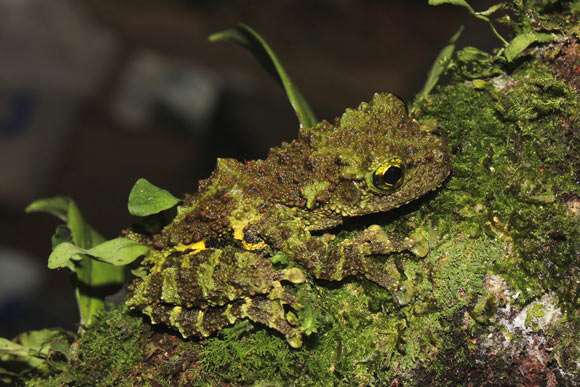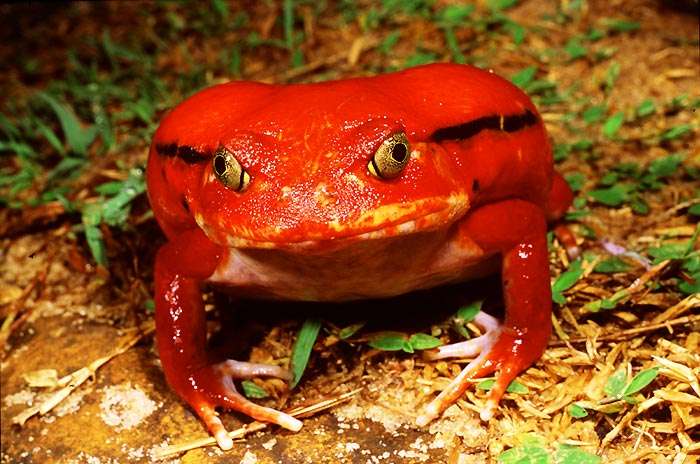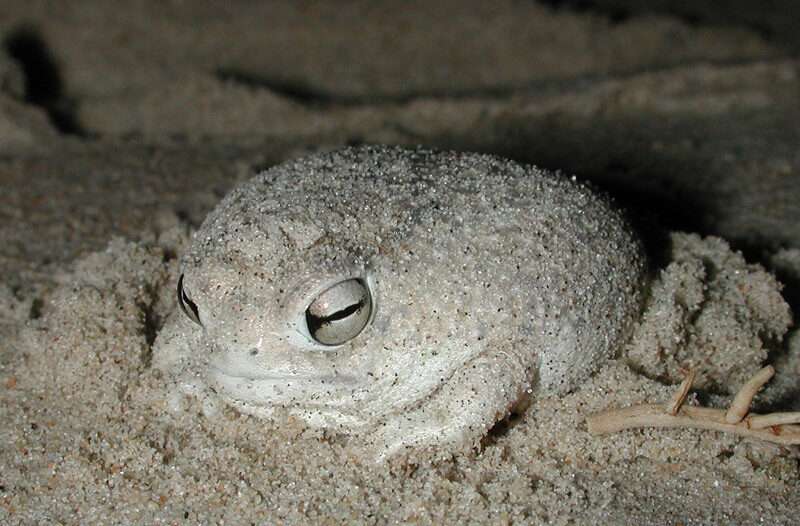
Theloderma corticale is a species of frog in the Rhacophoridae family. It can be found in southern China, middle Laos, and northern Vietnam (Guangdong, Guangxi, Hainan, Yunnan). The disappearance of forests threatens its habitat. Additionally, it is gathered for the global pet trade. This frog is susceptible to the chytrid fungus Batrachochytrium dendrobatidi, like many other amphibians.
Habitat
Vietnam’s northern area is home to the mossy frog. They can be discovered in evergreen forests or along the banks of streams that meander through rocky mountains. They are terrestrial and occupy the forest floor, blending in with the mossy rocks where they reside.
Appearance
Its skin has a mottled green and brown colour that resembles moss growing on rock and serves as a good form of concealment, earning the popular name “mossy frog.” They have soft underbelly and big sticky pads on their toes. Their snout-vent length is about 61 mm (2.4 in). The females can develop to a size of 8 to 9 cm and will grow larger than the males (3.1–3.5 in). When threatened, this species may coil up and pretend to be dead.
Diet
The diets of mossy frogs vary because they consume whatever that they can fit in their mouths and is readily available. Various insects and aquatic bugs that dwell close to bodies of water would fall under this category.
Reproduction
Within a clutch, females deposit 8–10 eggs in cavities in rocks that are above the water line. To assist stop aquatic predators from devouring the eggs, this is being done. Within one to two weeks, the eggs hatch, and 90 days later, the froglets emerge.
Keeping as Pet

Tank Size
A basic guideline for housing Vietnamese mossy frogs is 10 gallons per frog. Some keepers advise a minimum of 10 gallons and an additional 5 gallons for each frog in the enclosure.
Lighting
Because UVB lamps are necessary for frogs to absorb calcium and vitamin D, lighting is essential to their overall health. To provide them with heat and light, we advise utilizing Zoo Med Reptisun lights with an additional LED bulb. To maintain daytime temperatures between 75°F and 80°F and overnight temperatures close to 70°F, place a digital thermometer in the tank.
Temperature
Vietnamese mossy frogs are typically kept at ambient temperature. It is advised to keep the room between 65 and 75 degrees Fahrenheit. Since their natural habitat is quite chilly, occasional temperature drops below 60 ° F haven’t been known to harm this particular species. Anytime the temperature rises above 80 degrees Fahrenheit, it is risky and can lead to stress or even death.
Substrate
It’s not too difficult to select a substrate for your Vietnamese mossy frog. They need both land and water because they are semi-aquatic animals. Some keepers decide to surround their cage with natural cork bark and 2 to 4 inches of water. This gives them places to hide and makes an area that resembles dry land where they can sit and climb.
Another choice is hard-scape components like boulders and medium-sized pebbles. You can be as creative as you like. For Vietnamese mossy frogs, it is appropriate to build a naturalist vivarium from of rocks, cork bark, gravel, live plants, and actual moss.
Humidity
The ideal humidity range is 60% to 90%. Due to their semi-aquatic nature, a portion of their tank will be filled with water, increasing the humidity there. Unfortunately, this won’t be enough to maintain a high enough humidity level. It is sufficient to mist the cage two to three times per week.
Substrates that hold moisture can also be helpful. Another choice is to use a sheet of plastic or a piece of glass to partially enclose the screen lid, covering around 75% of the top of their tank.
Table





